As previously predicted, Nikon released four new products at CES 2020 this week. They are:
- Full-frame SLR camera D780, National Bank pricing body price is 14800 yuan
- Long zoom fixed lens camera COOLPIX P950
- AF-S NIKKOR 120-300mm f / 2.8E FL ED SR VR, the national bank price is 70,800 yuan
- Z 70-200mm f / 2.8 VR S, National Bank pricing 16800 yuan
Basically, these new products have appeared on the Nikon booth at the domestic press conference and CES 2020 respectively. In addition to the P950, Nikon also announced the price of three other national banks.
Also, this time Nikon is also exhibiting the D6. This flagship product, born before the Olympic Games, is expected to be released in February this year.
Nikon D780: The transitional fuselage that connects the front and back?
From the name number, D780 is an upgraded version of D750.
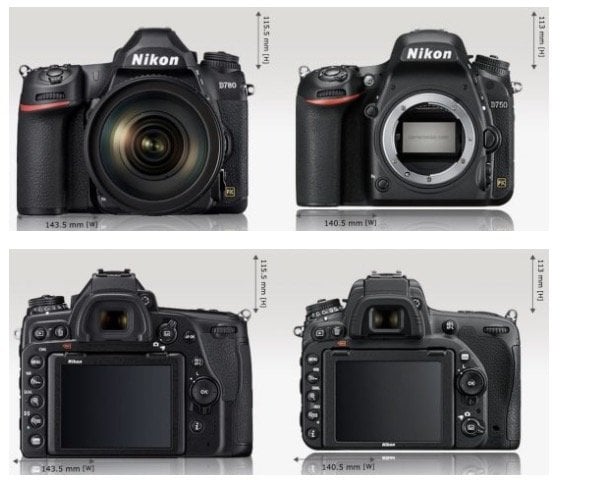
If you compare them together, you will find that the D780’s body is slightly larger and heavier than the D750. The D780’s “height” and shoulder width will be longer than the D750, and the weight will also increase from 750g to 840g.
The change in volume is not too big, but the change in weight is still slightly noticeable. Although the D850 will be a bit heavier than the D810 when it was launched before, in this environment of advocating flagship lightweight, Nikon still feels weird to continue to gain weight.
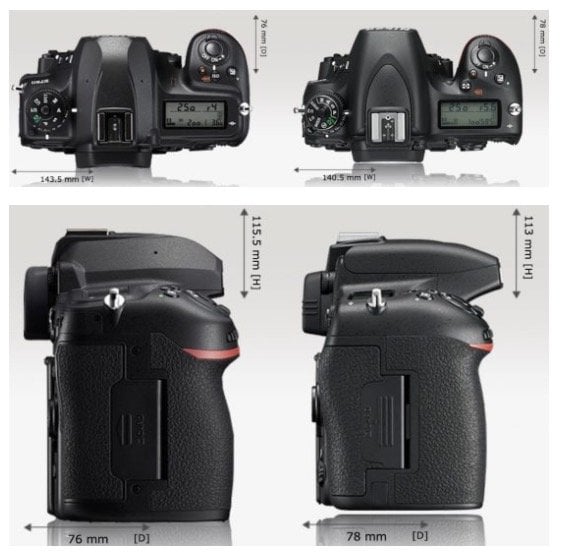
Although the holding handle of D780 will be shorter than that of D750, the arc of touching the forefinger has also been adjusted. D780 will more closely fit the holding position of human hands, and the holding feeling may be better than D750.
The key configurations of the two bodies have not changed much, except that the right button on the D780 will be slightly streamlined than the D750.

The back of the D780 is still carrying a 3.2-inch 2.36 million color touch screen. After all, a folding structure similar to the D850 is added.
If you use the D780 to shoot video, or encounter a situation that requires screen framing, the D780 will be more convenient than without a folding structure.
I thought Nikon would use the dual XQD card slot on the D780 like the Z 6 to accelerate the promotion of XQD cards. But as you can see from the release of D780, it is still a SLR camera with dual SD card slots. Nikon chose to use the SD card on the D780, which is believed to be based on the consideration of upgrades for old users.
Although XQD is not used, both SD card slots of the D780 support UHS-II. It is actually enough to meet the continuous shooting of the D780.
As for the battery, the D780, like the D750 and Z 6, uses Nikon’s EN-EL15b battery, which can achieve 2,260-frame battery life using the optical viewfinder. If you are a D750 user who upgraded to D780, or a user who tangled between D780 and Z 6 during the upgrade, then the battery is surely not a problem that you have to worry about.
The parameters of the new machine are basically the same as those previously predicted. The configuration of the D780 will be closer to the full-frame mirrorless camera Z 6 previously launched by Nikon.

D780 is equipped with a 24-megapixel back-illuminated full-frame CMOS. It is equipped with Nikon ’s latest image processor EXPEED 6, which supports 14bit and 12bit lossless RAW shooting. It also supports up to 4K 30P and 1080P 120P video shooting. Standard The sensitivity range is ISO 100-51200.
In terms of focusing performance and continuous shooting, the Nikon D780 is equipped with a 51-point focus point, of which 15 points are cross focus points, and the focusing system also supports face priority. In live view, there is a 273-point hybrid AF focusing system with a coverage of about 90%. It also supports face and eye priority. The D780 supports 7 frames per second continuous shooting in the optical framing state, and can achieve 8fps (14bit RAW) and 12fps (12bit RAW) as fast as the live view.
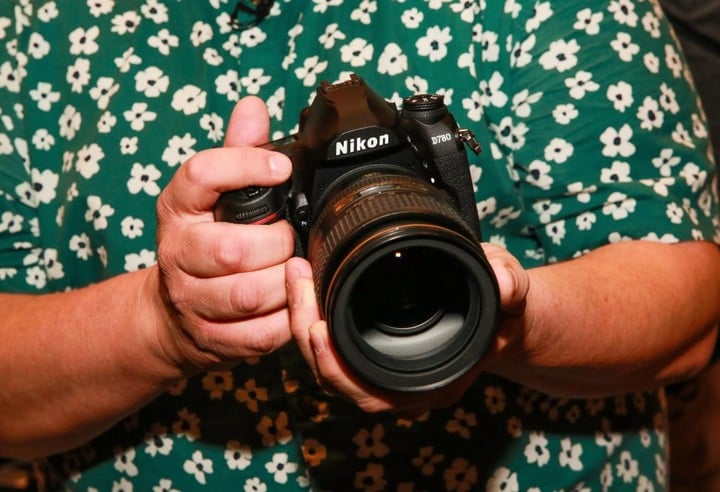
The continuous shooting performance of the D780 is similar to that of the Z 6 and the performance of the electronic shutter is the same. The Z 6 is dominant in continuous shooting with a mechanical shutter, but for daily use, the difference between 9fps and 7fps is not large, and you don’t need to worry too much when choosing.
In terms of other configurations, the D780 also supports Bluetooth and 2.4GHz and 5GHz dual-band Wi-Fi. There are also USB-C, HDMI, and 3.5mm audio input ports and monitoring ports on the body. Basically the interfaces and functions required daily Ready.
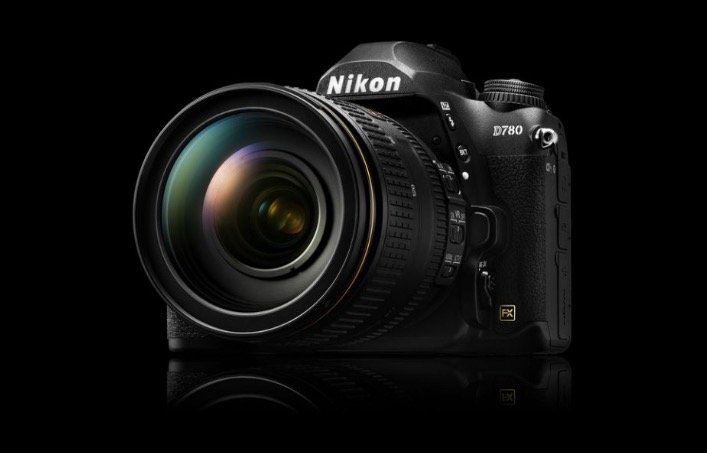
In terms of pricing, the National Bank of D780 is priced at RMB 14,800, which is similar to that of D750.
In the face of the D780, some users who are still watching said that the Z 6 that had been lowered to less than 10,000 yuan is a more suitable choice. The 675g body plus the 135g FTZ adapter ring is still lighter than the 840g D780. In addition, it is also certain that Nikon will develop the Z mount in an all-round way. Now it seems that it is unnecessary to entangle the SLR.

To the current Nikon, the D780 is more like an interface for the transition of old and new systems.
It retains the things of the SLR era, and also incorporates the elements of the new Z series in the SLR body. UHS-II SD dual card slots, old batteries, and old bayonets can reduce the upgrade pressure for old users. Using new image processing and sensor configurations can also allow them to obtain upgrade results. For those Nikon users who still want to use a DSLR and feel the pressure to upgrade to a mirrorless system, the D780 may be a more suitable transition product.
NIKKOR Z 70-200mm f / 2.8 VR S, the second ternary lens with Z mount
The NIKKOR Z 70-200mm f / 2.8 VR S released this time is the second Z-mount large ternary lens after the Z 24-70mm f / 2.8E ED VR S.
Z 70-200mm f / 2.8 VR S uses 21 elements in 18 groups of optical structures, including Nikon’s ED and SR lenses. Nikon has also added ARNIEO and Nano crystal coatings. Nikon said at the press conference that this time the impact of the lens focus breathing effect is reduced, and the smoothness of the lens focus is also improved. The sound generated by the focus motor is also reduced, which can achieve a smoother and quieter focusing effect.

Z 70-200mm f / 2.8 VR S’s body is also very clean, showing the high-end feel of Z-mount S-standard lens. The lens surface has details similar to the stonewash effect. Nikon also added custom operation keys on the lens body to facilitate users to set the functions themselves. The lens with internal zoom structure also displays the current focal length through a small LED screen.
In terms of price, the Z 70-200mm f / 2.8 VR S is priced at 16800 yuan, and it is expected to be officially launched in March.
For high-end users and professional photographers, the three lenses called 2470, 70200, and 1635 (or 1424) are essential. So whether it’s Sony E-port, Canon R-port, Nikon Z-port, all three are at the starting point of their own mirrorless system high-end lens series, and quickly complete two sets of three yuan size lenses.
We also mentioned in previous reports that Nikon may also launch the Z 14-24mm f / 2.8 S in 2020 in accordance with the previous plan. In this case, the Nikon Z port has a large ternary and the system is complete Sex and competitiveness will be stronger.
AF-S NIKKOR 120-300mm f / 2.8E FL ED SR VR, ready for the Olympics and D6
Nikon has also released the AF-S NIKKOR 120-300mm f / 2.8E FL ED SR VR, a constant-aperture long zoom lens for the SLR F-mount.
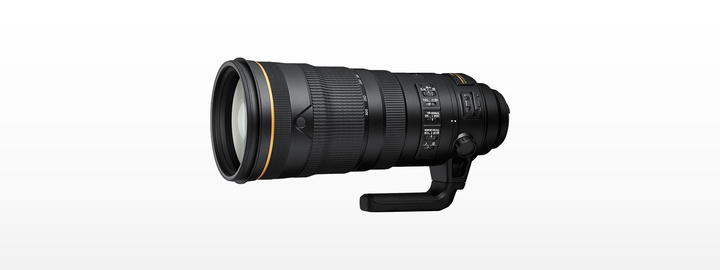
The 25-element, 19-group optical structure of this lens has the same ED and SR lenses as the Z 70-200mm f / 2.8 VR S, as well as ARNIEO and Nano crystal coatings. The lens also has a weatherproof design, and it also provides 4 stops of image stabilization. Look at the focal length of 120-300mm. I believe this lens can be used in sports news photography.
Nikon chose to launch this lens at this time, I believe it is also the same as D6, ready for this year’s Tokyo Olympics.

In terms of price, the National Bank of AF-S NIKKOR 120-300mm f / 2.8E FL ED SR VR is priced at RMB 70,800. Compared with foreign pricing of more than 9,000 pounds, the National Bank is still cheaper. It will be one month earlier than the Z 70-200mm f / 2.8 VR S, and it will be officially released in February this year.
COOLPIX P950, Nikon “Mooncraft” with 83x optical zoom
Still updating the long zoom compact cameraThere are not many manufacturers. In addition to Sony’s RX10 series, only Nikon’s COOLPIX P900 is in this series.
But unlike the RX10, which is fixed in the position of “professional standby machine”, the COOLPIX P900 series is only focused on the selling point of “ultra-long zoom”. Upgrading to COOLPIX P950, this model achieves 166 times more focus, and can achieve a maximum focal length coverage of 24-2000mm.
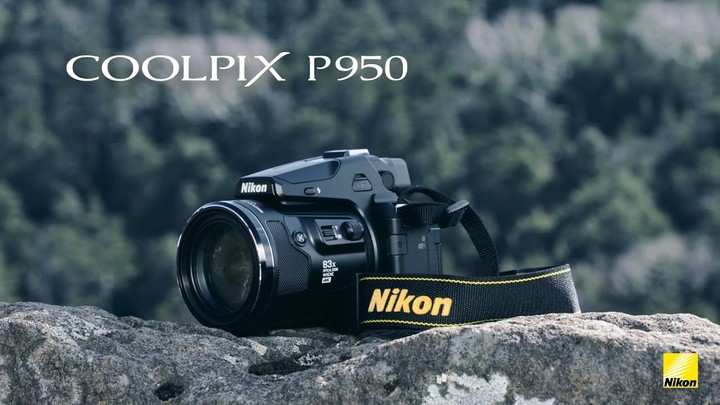
In terms of configuration, the COOLPIX P950 is actually an upgrade of the COOLPIX P900. It is equipped with a 16-megapixel sensor, equipped with a Nikon fast EXPEED image processor, and the body also comes with a dual-detection anti-shake effect. For video, the body supports 4K 30P and 1080P 60P shooting.
The biggest highlight of this machine is the lens. The COOLPIX P950 is equipped with an 83x optical zoom lens, which can achieve equivalent focal range coverage of 24-2000mm. At the same time, it can also achieve a maximum equivalent of 166x dynamic fine zoom of 4000mm. . The lens aperture is F2.8 and it is also equipped with Super ED lens to reduce distortion.
However, the focus of this lens is on the zoom range. Even without the digital zoom, there is no interchangeable lens camera to cover the focal length of 2000mm. For those who want to simply pat the moon or want to play ultra-long distance zoom, the COOLPIX P950 will be a more straightforward choice.
In terms of price, COOLPIX P950 has not yet announced the pricing of the State Bank. Its foreign pricing is 799 pounds, equivalent to about 7218 yuan. According to the generally higher foreign prices, the national bank price of COOLPIX P950 may be cheaper.
Forecast of D6, speculation of new machines in the future
Nikon released these four new products at CES this year. In addition to the one camera and three mirrors previously predicted, there is also an Easter egg called COOLPIX P950.
Although we did not see the new flagship body at this launch event, Nikon is actually also in the CES exhibition area Exhibition of D6 which has not yet been released . However, Nikon did not announce the parameters of this model, and it may not be officially revealed until the February release.
In addition to D6, there are still some new product predictions related to Nikon. In 2020, they will mainly launch more products around Z-mount mirrorless camera systems.
Now There are news points pointed out , Nikon will launch two ZPS A and Z 70 -C interchangeable lens mirrorless camera, one is a lower-end entry-level machine than the Z 50, and the other is a higher-end mid-to-high-end model than the Z 50, which enriches the Z-mount APS-C body from entry to mid-range. product line.
In addition, the Z series may also launch a full-frame model with high pixels or high performance, which is expected to be launched in 2020-2021. If it is the main performance body, it may be a Z-mount news machine, or it may be the same Z-series APS-C flagship as the D500. If it is a high-pixel body, there is already a Z 7 before, then it may be a model with 60 million pixels and higher positioning than the Z 7.

D500 This APS-C flagship SLR also has the possibility of a small update, there is forecasting guide This small update will integrate the D500 and D7X00 series, but it is not yet known.
